esp32 vs esp8266: Which one is better for your project?
Introduction
ESP32 and ESP8266 are cost-effective Wi-Fi modules suitable for Internet of Things (IoT) projects. Both possess 32-bit processors. The ESP32 is a dual-core 160MHz to 240MHz CPU, while the ESP8266 is a single-core processor running at 80MHz. Both ESP32 and ESP8266 are control chips. Because they are widely used in Wi-Fi modules, many users think that esp32 is a WIFI module, but it is just a control chip on the development board. Espressif's ESP32 is called a new and improved version of the ESP8266. So should we upgrade ESP32? Which one is better?
Table of Content
What is ESP32?
ESP32 is a low-power, high-performance Wi-Fi and Bluetooth chip with rich peripherals and interfaces. It uses a 3.3V power supply, has built-in 2.4GHz Wi-Fi and Bluetooth functions, supports a variety of memories, and has powerful processing capabilities and programmability. In addition, ESP32 also has excellent antenna performance and low power consumption design to ensure stable operation for a long time.
ESP32 Applications
- Smart home: ESP32 can control household appliances, lighting, security systems, etc., to achieve remote control and intelligent management.
- Smart city: ESP32 can be used in intelligent transportation, environmental monitoring, public safety, and other fields to improve the efficiency and intelligence level of urban management.
- Industrial Internet of Things: ESP32 can be used in industrial automation, remote monitoring, data collection, and other fields to improve production efficiency and reduce operating costs.
- Medical health: ESP32 can be used in remote medicine, health monitoring, and other fields to provide patients with more convenient and personalized medical services.

Figure1-ESP32 WIFI Application
ESP32 Advantages
- Low power consumption: ESP32 has excellent low power consumption performance, ensuring that the device operates stably for a long time.
- High performance: ESP32 has powerful processing capabilities and high-speed Wi-Fi and Bluetooth connections to meet various application needs.
- Programmability: ESP32 supports multiple programming languages and development tools, making it convenient for developers to develop and customize.
- Rich peripherals and interfaces: ESP32 has a variety of peripherals and interfaces to meet various hardware connection needs.
- Wide range of application fields: ESP32 can be used in various IoT application scenarios and has broad market prospects.
What is esp8266?
Espressif's ESP8266EX chip is in the ESP8266 WIFI module. It is a chip with a complete TCP/IP stack and microcontroller functions. It has a built-in Tensilica L106 32-bit RISC processor (80MHz), with a maximum clock speed is 160mhz, and iBus, dBus, and AHB interfaces are built-in. Up to 16MB of external SPI flash memory can be used. ESP8266EX supports 14 wireless channels and a 2.4GHz receiver and transmitter. In terms of Wi-Fi (72.2mbps), ESP8266EX implements TCP/IP and the complete 802.11 b/g/n WLAN MAC protocol (2 virtual Wi-Fi interfaces).
In the ESP8266EX chip's three power management modes: Mode -sleep, light sleep, and sleep (the fourth is active mode), wireless and Wi-Fi will be disabled. The chip interface includes 17 GPIO pins, 4 software-implemented PWM output pins, and SDIO, SPI, HSPI, I2C, I2S, and UART interfaces. The ESP8266EX chip also supports infrared remote control interfaces and embedded analog-to-digital converters.
esp32 vs esp8266: What is the difference?
Both ESP32 and ESP8266 WiFi modules have GPIO and support various protocols such as SPI, I2C, and UART. The best part is that they come with wireless networking, which sets them apart from other microcontrollers like Arduino. This means you can easily control and monitor your device remotely via Wi-Fi or Bluetooth (ESP32) at a fraction of the price.

Figure2-esp32 vs esp8266
esp32 vs esp8266: Specification
ESP32 is an upgraded version of ESP8266. It adds extra CPU cores, faster Wi-Fi, more GPIOs, and supports Bluetooth 4.2 and Bluetooth Low Energy. In addition, the ESP32 is equipped with touch-sensing pins that can wake up the ESP32 from deep sleep, a built-in Hall effect sensor, and a built-in temperature sensor.
Comparison Table Between ESP32 vs ESP8266
|
Comparison |
ESP32 |
ESP8266 |
|
Clock Frequency |
160 or 240mhz |
80 MHz |
|
Bluetooth |
BLE |
No |
|
Hall Sensor |
Yes |
No |
|
Camera Interface |
No |
No |
|
Temperature Sensor |
Yes |
No |
|
Touch Sensor |
10 |
No |
|
Security |
Security Boot flash encryption. OTP 1024-bit |
No |
|
Low Power Consumption |
10uA deep sensor |
20uA |
|
Temperature |
Yes |
No |
|
Co-Processor |
ULP |
No |
|
Total GPIO |
39 |
17 |
|
Crypto |
RSA, RNG, ECC, SHA-2, AES |
No |
|
SPI |
4 |
2 |
|
USB OTG |
No |
No |
|
Microcontroller |
Single or dual-core 32-bit LX6 Xtensa |
Single core 32-bit L106 Xtensa |
|
ROM |
448 KB |
No |
|
CAN |
2 |
No |
|
Ethernet |
10/100 Mbps |
No |
|
External SPIRAM |
Up to 16 MB |
Up to 16 MB |
esp32 vs esp8266: GIPO
ESP32 has more GPIOs than ESP8266, and the code can be set according to different pins (UART, I2C, SPI) because the multiplexing function of the ESP32 chip allows you to assign multiple functions to the same pin.
For analog pins, these are static, but the ESP32 supports measurements on 18 channels (analog enable pins), whereas the ESP8266 only has one 10-bit ADC pin, and the ESP32 also supports two 8-bit DAC channels. In addition, the ESP32 contains 10 capacitive sensing GPIOs that can detect touches and can be used to trigger events or wake up the ESP32 from deep sleep.
The ESP32 is more powerful than the ESP8266, contains more GPIOs with multiple functions, faster Wi-Fi, and also supports Bluetooth. Many people think that the ESP32 is more difficult to work with than the ESP8266 because it is more complex, but in fact, the ESP32 is just as easy to program as the ESP8266, especially with Arduino or MicroPython.

Figure3-esp32 vs esp8266-GIPO
esp32 vs esp8266:Arduino IDE
There are many ways to program the ESP32 and ESP8266 boards. Currently, both boards can be programmed using the Arduino IDE programming environment. However they may not be compatible with the same libraries and commands, and some libraries are only compatible with one of the boards, so some modifications are required.
esp32 vs esp8266 MicroPythonFirwmare
Another way to program ESP32 and ESP8266 boards is to use MicroPython firmware. MicroPython is a reimplementation of Python 3 for microcontrollers and embedded systems. MicroPython is very similar to regular Python. In MicroPython, most Python scripts are compatible with both boards (unlike when using the Arduino IDE), and the same scripts can be used for both ESP32 and ESP8266.
esp32 vs esp8266 price
Both chips are very cheap, but the ESP32 costs slightly more. In addition, because ESP8266 has been on the market for a long time, it can get more support in terms of software, making it more convenient and compatible to use. However, ESP8266 has some limitations in GPIO mapping, and there are not enough pins to operate. At this time, you can choose to use ESP32 or ESP8266 according to the project.
esp32 vs esp8266: Should you upgrade?
In terms of cost, both are low-cost products, but the cost of ESP32 is slightly higher, and the cost of ESP32 is twice that of ESP8266. Since ESP8266 has been on the market for a long time, it can get more support in terms of software, making it more convenient and compatible to use. However, the ESP8266 has some limitations in terms of GPIO mapping and there aren't enough pins to operate on.
In general, ESP32 has advantages in the following aspects:
power consumption: the operating current of ESP32 is 5µA, which is lower than the 20µA power consumption of ESP8266.
Clock speed: The ESP32’s clock speed is also twice as fast as the ESP8266.
Interface expansion: ESP32 Bluetooth and GPIO have more pins, which can meet more connections.
Therefore, if your project relies on software that is fully mature and no longer updated, the ESP32 may not support it. If your existing equipment is working fine and you have no plans to add new features, it's not worth upgrading. On the other hand, if your project requires ultra-low power consumption or requires more GPIOs, or even a more powerful processor and connectivity, then it is worth upgrading to the ESP32.
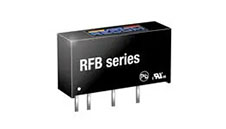 DC-DC converter RFB-0505S: Specification,Datasheet,Features and Applications6/13/2024 440
DC-DC converter RFB-0505S: Specification,Datasheet,Features and Applications6/13/2024 440The RFB-0505S is a DC-DC converter from RECOM Power, Inc., belonging to the RFB Series. It features a Single In-Line Package (SIP7) and provides a single unregulated output. This converter offers 1 watt of power with an output voltage of 5V and is rated for an isolation voltage of 1kV.
Read More >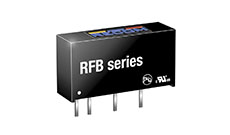 Understanding the RFMM-0505S DC-DC Converter: A Comprehensive Guide6/4/2024 626
Understanding the RFMM-0505S DC-DC Converter: A Comprehensive Guide6/4/2024 626In the world of electronics, ensuring efficient power management is crucial for the performance and reliability of devices. One of the key components in achieving this is the DC-DC converter. Today, we dive into the specifics of the RFMM-0505S DC-DC converter, exploring its features, applications, and benefits.
Read More >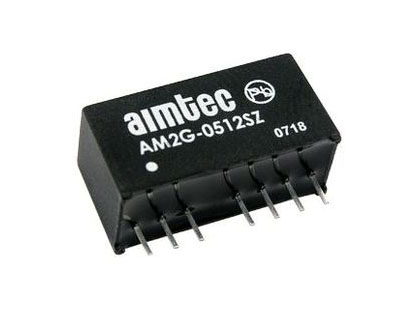 12V DC-DC Converter AM2G-0512SZ: Specifications, Datasheet, Applications and Features6/3/2024 533
12V DC-DC Converter AM2G-0512SZ: Specifications, Datasheet, Applications and Features6/3/2024 533A DC-DC converter is an essential electronic device to convert a direct current (DC) source from one voltage level to another. These converters are widely employed in various applications, including portable electronic devices, automotive systems, and renewable energy installations.
Read More >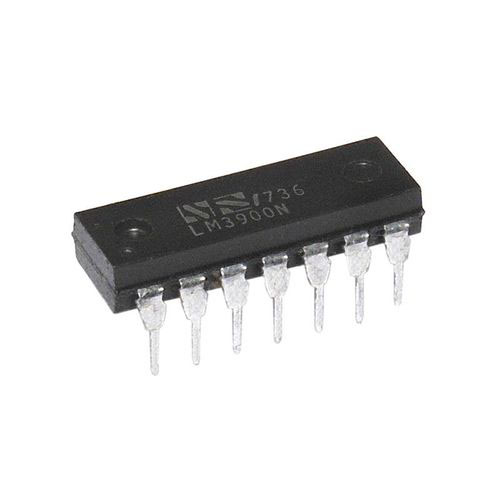 What is LM3900 Quadruple Norton Operational Amplifier?5/30/2024 1127
What is LM3900 Quadruple Norton Operational Amplifier?5/30/2024 1127The LM3900 consists of four independent dual-input internally compensated amplifiers. These amplifiers are specifically designed to operate on a single power supply voltage and provide a large output voltage swing. They utilize current mirrors to achieve in-phase input functionality. Applications include AC amplifiers, RC active filters, low-frequency triangle waves, square wave, and pulse waveform generation circuits, tachometers, and low-speed, high-voltage digital logic gates.
Read More >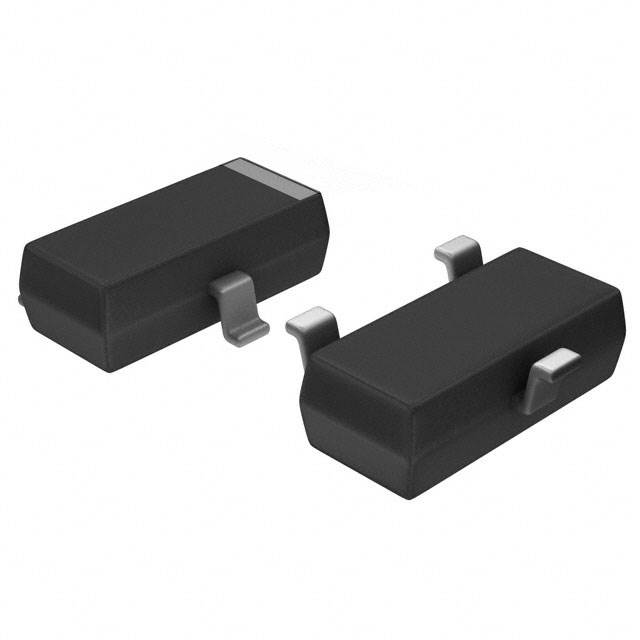 Exploring the MMBT3906 Transistor: A Comprehensive Guide5/24/2024 767
Exploring the MMBT3906 Transistor: A Comprehensive Guide5/24/2024 767The goal of the Taiwan Semiconductor MMBT3906 PNP Bipolar Transistor is to provide a high surge current capability with minimal power loss. This transistor is perfect for automated installation and has high efficiency.
Read More >















